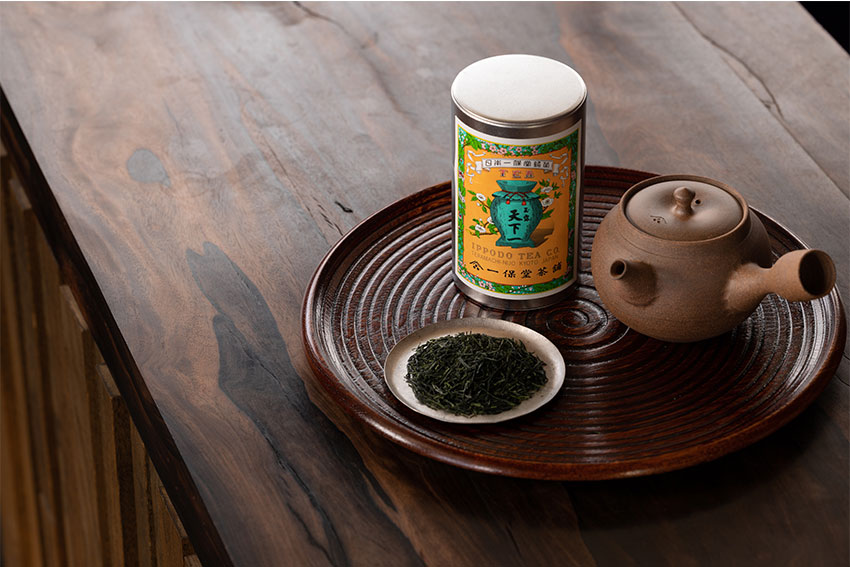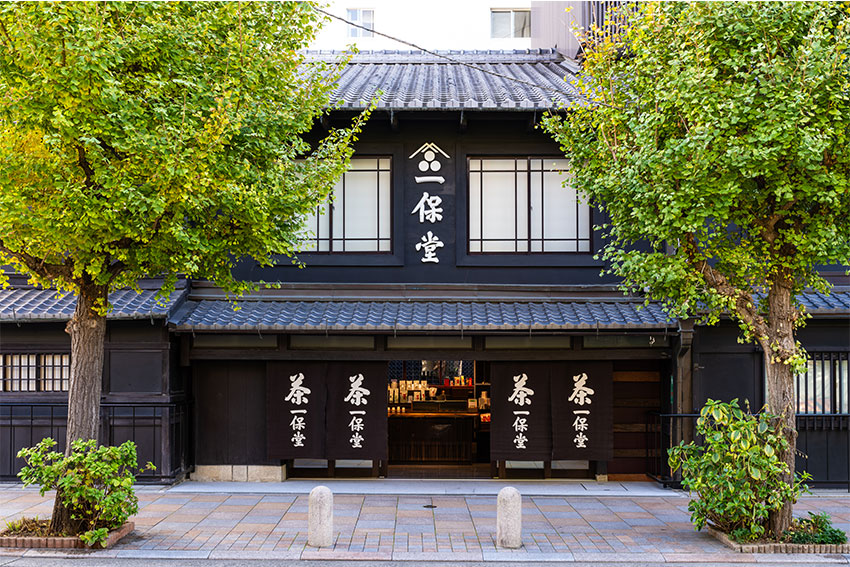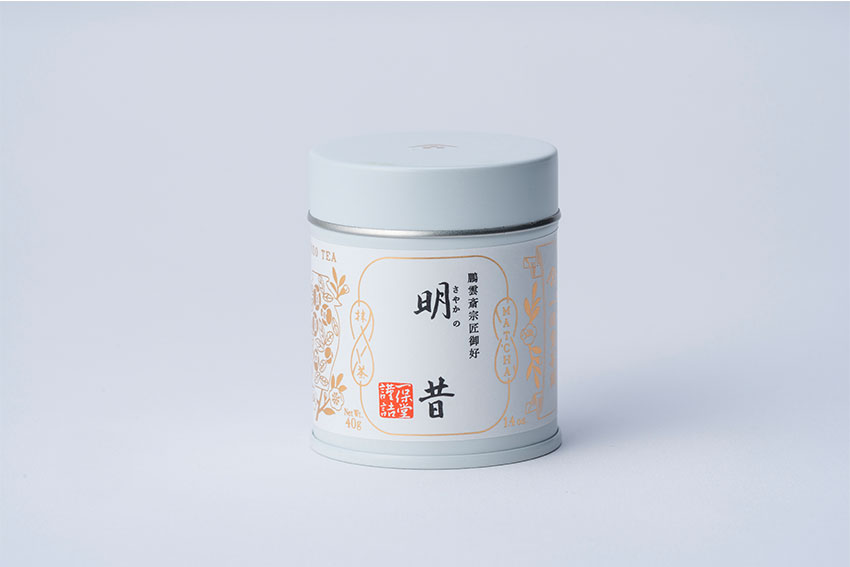For over 300 years, Ippodo Tea has evolved with the times while remaining devoted to exceptional Japanese tea quality.

Over the past decade, Japanese food-related exports have consistently reached record-breaking levels, totaling JPY 1.45 trillion last year. This trend is mirrored internationally, with the number of Japanese restaurants overseas more than tripling during the same period. What do you think accounts for the continued rise and record-breaking popularity of Japanese food and cuisine worldwide?
There are two main reasons for the growing popularity of Japanese food and cuisine. The first is the complexity and depth of washoku, which offers a unique and intricate combination of tastes and flavors that appeal to a wide range of palates. The second reason is the health benefits associated with washoku. It often features a variety of vegetables and wholesome fish, making it a nutritious choice. These health aspects have gained significant traction globally, contributing to its increasing appeal.
The Japanese government aims to further increase food-related exports to JPY 5 trillion by the end of the decade, adopting a more internationalized strategy and raising global awareness of Japanese products to achieve this goal. What opportunities do you see for your business as a result of these efforts, and how do you plan to leverage them moving forward?
Our tea products pair exceptionally well with washoku, so the increasing global popularity of Japanese cuisine naturally benefits our business as well.
That said, we don’t limit ourselves to washoku, as Japanese tea complements a wide variety of cuisines. Internationally, we are focused on finding ways to integrate our tea products into people’s daily lives, expanding their appeal beyond traditional pairings.
The history of green tea cultivation dates back 4,000 years to China, and it was introduced to Japan in the 9th century. Since then, Japan has developed its own unique tea culture, including the famous tea ceremonies in which matcha plays a central role. Could you share with our readers the history of green tea cultivation in Japan and the role your company has played in this tradition over the past 300 years?
As you mentioned, tea cultivation began in China over 4,000 years ago, and while Chinese tea culture should have flourished even more, the frequent rise and fall of dynasties disrupted its continuity. Each new dynasty often rejected or discarded the practices of its predecessors, which prevented the succession of certain traditions, including tea culture.
In contrast, Japan’s geographical position as an island nation shielded it from frequent invasions. As a result, when new ideas or products were introduced to Japan, they were able to take root and evolve in uniquely Japanese ways. This applies not only to tea but to many aspects of Japanese culture and craftsmanship, which have developed their own distinct identity over time.
As for our role in the development of Japanese tea culture, Ippodo was founded in 1717. In its early days, the company dealt with a variety of products, not just tea. It wasn’t until around 1846 that we began focusing exclusively on tea. While it is difficult to pinpoint our exact role in the development of Japanese tea culture, each generation of owners and presidents has shaped the company by striving to contribute to society in meaningful ways. Today, Ippodo represents an amalgamation of those efforts and experiences, reflecting the evolution of Japanese tea culture over the centuries.
One of our core principles is maintaining strong communication with our customers. The tea products we sell are, in a sense, semi-finished products. Customers purchase them from our stores, but the experience isn’t complete until they prepare the tea themselves—whether by pouring water over loose leaves or steeping tea bags. Our mission goes beyond selling tea; it involves guiding our customers on how to fully enjoy and appreciate our tea in their homes. By providing this guidance, we aim to ensure they can experience the very best flavors and the essence of Japanese tea culture.

We are also mindful of the high hurdles that some people associate with tea, particularly matcha. Many people associate matcha with formal Japanese tea ceremonies, which can make it seem inaccessible or intimidating. Additionally, while matcha-flavored sweets and candies are widely enjoyed, drinking matcha daily is rare for many Japanese people because it is often perceived as a high-end product.
To make matcha more approachable, we serve it in small, cute teacups, showing people that it can be enjoyed in a casual and accessible way. This approach helps to shift perceptions and encourage more people to incorporate matcha into their daily lives. By being mindful of how we introduce our products, we aim to show customers that this rich culture and tradition are far more accessible than they might think.
You mentioned earlier that your goal is not just to sell tea but to integrate your products into people’s daily lives. It’s interesting to hear that even in Japan, matcha is often considered formal, and this perception is likely shared by people overseas who may not know how to prepare it or believe it is reserved for special occasions. As you look to further internationalize your business, what strategies are you implementing to overcome these misperceptions and make matcha more approachable for people outside of Japan?
Communication is key. With tea, it can be challenging to understand the product just by looking at it, and it’s equally difficult to describe its taste and flavor in words. That’s why it’s essential for us to meet our customers in person, understand their preferences, and guide them to the tea that best suits their tastes.
Having a physical space plays a vital role in this process. Our relationship with customers doesn’t end when we sell a product—we aim to make tea drinking a regular part of their daily lives. Once customers incorporate tea into their routines, they can conveniently restock through our online store and explore other products. However, if they have questions or need assistance, we want to ensure they have access to a physical store where they can speak with us directly.
Establishing and maintaining physical stores requires significant investment, but we see this as an essential part of building trust and deepening relationships with our customers. Looking ahead, we aim to expand our presence by opening more physical stores in popular cities around the world.
You highlighted the importance of having physical stores for your business. In addition, your company operates an online platform for the U.S. and a global e-commerce store for the rest of your overseas customers. How does your global e-commerce platform complement your physical spaces? We also understand that you’ve had overseas stores in the past. Looking ahead, are you planning to open more physical stores internationally? If so, are there specific markets you are targeting for expansion?
In an ideal world, the most convenient option for our customers would be for them to purchase our products at their local supermarkets. However, for our global customers, our online store is currently the only option. Operating an online store comes with challenges, such as delivery fees, but we’ve taken steps to address this. For instance, we work with a warehouse in the U.S. that allows us to ship products domestically, which reduces delivery times and fees. Looking ahead, we hope to expand this type of operation to other locations around the world little by little.
As for physical stores, we closed our New York store in 2022 but are working on reopening another store there in the future. Expanding physical stores to other overseas locations is challenging for us as a small company, but we remain committed to doing what we can to increase our presence internationally.
When we interviewed the president of Ujien, a small SME based in Osaka, she mentioned that they were looking for partners to open and operate their shops after providing them with the necessary knowledge and expertise. In your case, are you also seeking partners to manage your stores? If so, what strategies are you employing as an SME with ambitions to expand into new locations, markets, and regions?
We do partner with other companies; however, when it comes to operating our physical stores, we prefer to manage them directly. This approach allows us to maintain the specific worldview and vision we have for our company, ensuring that our values and standards are upheld.
Our focus is on maintaining and continuously improving the quality of our offerings, which is why we believe direct management is essential. Partnering with a company that handles a wide range of products and services might lead to our line of business becoming less exclusive, which could ultimately compromise our brand value over time.
You mentioned earlier the importance of communicating with your customers. For readers who may be interested in visiting your store after reading this report, what kind of in-store experience can they expect?
We receive a large number of foreign visitors at our Kyoto stores, and our goal is to immerse them in our flavors, tastes, and unique worldview. To achieve this, we carefully design our spaces, paying attention not only to the architecture and atmosphere but also to the way we communicate with our staff. When we talk about quality, we mean the entire experience—flavors, service, and ambiance. It’s always rewarding to hear that visitors enjoy their time in our stores.
One fascinating aspect of tea is how its flavor changes depending on the water temperature and the amount of tea leaves used. For instance, if a customer finds their tea too strong, our staff will provide guidance and brew it differently to suit their taste. This exchange of information is a key part of the in-store experience and allows us to connect with our customers on a deeper level.
As I mentioned earlier, our business is not just about selling tea—it’s about building relationships with our customers and helping them discover their ideal tea experience.

We understand that your blending method is quite unique compared to other companies. Rather than blending a single batch of tea leaves, you take multiple high-quality leaves and combine them to create a distinctive flavor profile. Could you explain this blending process to our readers? Additionally, what are the key advantages this method provides, and how does it differentiate your tea from other brands?
While some companies prefer single-origin tea, we choose to focus on blended tea. Blended tea allows us to create a more complex and layered flavor profile, which enhances the overall experience for our customers.
Another important reason we favor blending is the need to maintain a consistent level of quality and quantity. Single-origin tea is often tied to specific cultivation sites, and its quality can vary significantly from year to year depending on factors such as weather and harvest conditions. By blending high-quality tea leaves from multiple sources, we can ensure consistency and reliability in our products.
Blending also adds to the rarity and preciousness of the tea, as the process of combining different leaves requires skill and expertise. Our priority is to provide high-quality products to our customers, and blending allows us to uphold this commitment while offering a unique and enjoyable flavor experience.
One of Japan's significant challenges is its declining population, with farmers now averaging over 65 years of age. As the population ages, valuable skills and knowledge are at risk of being lost. In the case of tea cultivation, traditional techniques and expertise need to be preserved and passed on to future generations. How is your company addressing this issue, and what steps are you taking to ensure that this expertise is successfully handed down to new generations?
What you’ve described is exactly the case, and it presents a significant challenge. Ensuring sustainable production is critical to our business.
One step we’re taking is addressing the issue of fair compensation. With rising inflation, we aim to pay producers more to ensure they receive their fair share for the invaluable work they do. Additionally, we recognize the need to improve the efficiency of production sites, though implementing these changes will take time.
In Kyoto, we’ve been fortunate to maintain excellent communication and build strong relationships with producers over the years. Regular meetings and functions provide opportunities for sellers like us and producers to come together, exchange information, and share insights. This collaborative approach allows us to learn from one another and helps make the tea industry more sustainable in the long term.
Please imagine that our readers are going to taste your tea for the first time. Which tea would you recommend they try?
Our matcha tea is highly popular, and we offer a wide range of matcha products in various grades to suit different tastes and preferences. One product I would particularly recommend to your readers is Sayaka-no-mukashi. It’s a favorite among many customers and an excellent choice for anyone looking to enjoy high-quality matcha.

This year marks your company’s 308th anniversary, having been founded back in 1717. If we were to return to interview you again three years from now, what dreams and goals would you like to have achieved by then? Additionally, what message would you like to convey to our readers today?
Tea is more than just a beverage for quenching thirst—it brings color and flavor to life. While what we can do is limited, we aspire to reach as many people as possible, both emotionally and physically, through our tea.
Over the next three years, we anticipate significant changes, particularly with our stores in Tokyo and our plans for a store in New York. As I mentioned earlier, creating more spaces where we can communicate directly with our customers is a priority. My message to your readers is simple: we would love to meet and speak with you in our stores.
While matcha tends to garner the most attention, and it is indeed our most popular product, Japanese tea encompasses a much broader range of offerings. Our catalog and online store feature a wide variety of teas for customers to explore. Moving forward, we hope to create more opportunities to engage with our customers, showcase our products, and introduce them to the rich and diverse world of Japanese tea.
For more information, please visit their website at: https://www.ippodo-tea.co.jp/
0 COMMENTS